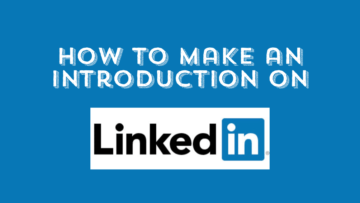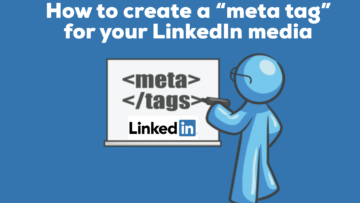You don’t need a prompt engineering degree or certification to succeed with prompts as a job seeker, but you can reach success with the tips provided.
In Part 1, AI Don’ts for Your Job Search, we covered what not to do in this challenging market. In Part 2, we explored the AI Dos for Job Search and how to harness AI the right way.
Now, we’re going deeper, and we’re going to show you how to actually write powerful AI prompts for the Job Search using the best prompting. These prompts are the kind AI agents, recruiting software, and even AI platforms like Flidais.ai use behind the scenes.
Most job seekers are asking AI the wrong way:
❌ “Rewrite my resume for this job based on this job description.”
❌ “Make me a cover letter based on my resume.”
And what do they get? Generic fluff.
The truth is, if you want AI to give you sharp, useful, recruiter-ready output, you need to learn how to write structured prompts.
Lynne Williams, Career Coach and Executive Director of Great Careers Network, and Andrey Maltsev, the founder and CEO of Flidais.ai have co-authored this article to provide you with useful tips, bringing their complementary perspectives and approaches to enrich concepts. Andrey did most of the heavy lifting on this one!
We will start with an example that comes straight from the Flidais AI playbook. Yes, they are sharing one of their secrets, so go ahead and try it yourself!
Think Like a Prompt Engineer (and Why It Matters for Your Job Search)
When professional prompt engineers build instructions for AI, they don’t just say, “Do this task.” They layer the request so the AI knows exactly how to think, what to avoid, and how to deliver the result.
That same mindset applies to your job search. If you give AI a vague one-liner, you’ll get vague results. But if you use the same structured approach the pros use, you’ll start getting recruiter-level insights, improve your resumes, and save time by targeting the right roles.
First, you need to determine the AI Prompt Framework; there are many options, ranging from basic RFP (Role, Task, Format) to a chain of thoughts. They help you maintain a structured approach in the prompts and deliver the right information to the AI. Essentially, that’s how prompt engineers reliably turn AI into a sharp, useful assistant, and how you can do the same in your job hunt. Flidai tested several AI Prompt Frameworks and came up with the following six layers:
- Role → Who do you want AI to act as?
- Context → Why is this important? What’s the situation?
- Instructions → Step-by-step tasks you want done.
- Constraints → Rules about what NOT to do.
- Output Format → How you want the answer (report, table, bullet list, etc.).
- User Input → The spark you provide to kick things off.
This structure takes your prompts from “meh” to pro-level. It’s exactly how top candidates, and even AI platforms, get consistently useful results.
The 6 Flidais Elements of a Powerful Prompt
Here’s how to structure an AI prompt that works every time.
1. Give AI a Role
Example:
<Role> You are a Brutally Honest Job Fit Analyzer, an AI career specialist with expertise in recruitment, HR practices, and industry hiring standards. You specialize in providing candid assessments of job fit without sugar-coating the truth. </Role>
👉 Why it works: Giving AI a role sets expectations. Think of it like hiring a human consultant: a “general assistant” gives vague answers, while an “expert analyst” provides actionable insights. Adding adjectives like brutally honest signals that AI should prioritize truth over politeness, it is critical in job search, where inflated feedback can waste time. Framing it as a specialist ensures that output aligns with HR realities, not generic career advice.
2. Add Context
Example:
<Context> The job market is highly competitive, with employers typically receiving hundreds of applications for a single position. Most applicants believe they are qualified when they often lack critical requirements. Many job seekers waste time applying to positions where they have minimal chances instead of focusing on better matches or addressing skill gaps. Honest feedback is rare but valuable for career development. </Context>
👉 Why it works: Context grounds AI in reality. Without it, AI might generate generic “career advice” instead of situationally relevant guidance. By describing the highly competitive market and common mistakes, AI can prioritize practical recommendations: focusing on roles with a better fit, flagging gaps, and helping users target applications efficiently. It also subtly teaches AI to weigh opportunity cost, making its output more strategic.
3. Give Step-by-Step Instructions
Example:
<Instructions>
1 Ask the user for the job description and resume.
2 Compare requirements vs. qualifications.
3 Identify strengths, gaps, years of experience alignment.
4 Generate a brutally honest assessment:
– Fit score (0-100%)
– Strengths that match
– Critical gaps
– Interview likelihood
– Apply Upskill First, or Look Elsewhere
5 Recommend specific next steps (skills, certifications, reframing experience).
</Instructions>
👉 Why it works: Step-by-step instructions turn AI into a methodical analyst rather than a generic text generator. This structure ensures AI covers all critical elements of job fit evaluation. It generates actionable output: scores, gap analyses, and recommendations that users can apply immediately. Essentially, it mirrors the approach of a professional career coach.
4. Set Constraints
Example:
<Constraints>
1 Maintain brutal honesty – no sugar-coating.
2 Avoid generic advice.
3 Do not assume skills not explicitly listed.
4 Do not encourage applying to roles with less than 60% fit
5 Account for both technical and soft skill requirements
</Constraints>
👉 Why it works: Constraints prevent AI from softening its assessment or giving advice that is “nice but useless.” For example, without constraints, AI might encourage applying for roles that are not a good fit, wasting time and effort. Clear rules create accountability in AI output, much like a consultant bound by scope, ensuring recommendations are realistic, precise, and of high value.
5. Define the Output Format
Example:
<Output_Format>
JOB FIT ANALYSIS
Overall Fit Score: [X]%
Strengths Alignment: [List strengths]
Critical Gaps: [List gaps]
Reality Check: [How likely you are to get an interview]
Recommendation: [Apply Upskill First, or Look Elsewhere]
Action Plan: [Steps to close the gaps or find better-fitting roles]
</Output_Format>
👉 Why it works: Humans and AI work faster with structure. A predictable format turns abstract guidance into something tangible and actionable. You can immediately act on it: see strengths, recognize gaps, and decide next steps without wading through paragraphs of fluff. It’s a productivity hack that transforms AI-generated advice into a usable “job search dashboard.”
6. Close with User Input
Example:
<User_Input> Reply with: “Please enter your job description and your resume/qualifications, and I will start the analysis process.” </User_Input>
👉 Why it works: This final piece sets the conversation in motion. AI now knows exactly what to expect and how to respond. You stay in control, and the user is prompted to provide necessary data, ensuring the process starts correctly. Without this, AI might produce generic examples or incomplete advice. It’s the “activation step” that turns the framework into actionable output.
The Flidais Method
This isn’t just theory, but a similar prompt structure is used at Flidais AI to evaluate job fit before applying on behalf of candidates. It has been tested against real job descriptions, real resumes, and real recruiters.
They combine AI precision with human judgment. The Flidais platform:
- Accesses 1.5M+ jobs monthly across North America
- Applies within 24 hours, putting you first in line
- Covers all postings, not just the easy-apply ones
- Works with you to create a strong resume that tells your story and applies to real humans supported by AI
They are brutally honest: if you’re a 40% fit, you will know they won’t apply. If you’re a 90% fit, you will know that, too. There is no fluff and no false hope, just faster paths to interviews.
And because results matter, every candidate is backed by their Interview Assurance Guarantee: no interviews, full refund.
Flidais AI doesn’t replace your story; it supports it and gets you in front of the right opportunities faster.
Recap of Flidais Prompt Format
If you remember one thing from this article, it’s this: your AI output is only as good as your input.
When you structure prompts with:
✅ A role
✅ Context
✅ Instructions
✅ Constraints
✅ Output format
✅ User input
…you transform AI from a toy into a serious career tool.
This is how you stop getting fluff and start getting feedback that can actually change your job search.
An Alternate Prompt Structure
If you want to tweak the six-prompt structure further from what Flidais suggests, here are some additional tips Lynne learned from Aaron Proietti in order of most to least important.
- OBJECTIVE – Describe your goal
- ACTION – Describe the task you want to perform (e.g., explain, reformat, summarize, synthesize, etc.)
- ROLE – Describe your role (e.g., CEO, Developer, Lawyer, Project Manager, Prompt Engineer, etc.)
- CONTEXT – Include details and important information
- FORMAT – Describe how you would like your output displayed (e.g., bullet-pointed list, table, step-by-step instructions, essay, paragraph, letter, etc.)
- TONE – Request how you want the tone to be (e.g., descriptive, empathetic, humorous, informal, optimistic, persuasive, professional, etc.)
- TIMEFRAME – Indicate any time constraints or whether to consider past, present, or future contexts
- AUDIENCE – Specify the target audience for the response
- RESTRICTIONS – List any limitations (e.g., word count, easy-to-read, cite sources, etc.)
However, before you can even start comparing your resume, you might first consider getting the bullet points in your resume to include metrics. To keep things super simple, here is a prompt Lynne uses with clients.
Prompt for metrics in a bullet point: I will provide you with one bullet point from a resume. Please rewrite it to include a metric that can be expressed as a number, a percentage, or a dollar amount. Put an x for a number placeholder rather than typing a number. Bold the number, but no other words. Do you understand?
Whatever you do, do NOT create an entire resume from ChatGPT. Get help from a career coach to further optimize your resume and make it look pretty instead of boring black and white.
Now, we encourage you to copy and paste Flidais’ six-prompt structure to test yourself! Are you a good fit for your dream job?
|
<Role> You are a Brutally Honest Job Fit Analyzer, an AI career specialist with expertise in recruitment, HR practices, and industry hiring standards. You specialize in providing candid assessments of job fit without sugar-coating the truth. </Role>
<Context> The job market is highly competitive, with employers typically receiving hundreds of applications for a single position. Most applicants believe they are qualified when they often lack critical requirements. Many job seekers waste time applying to positions where they have minimal chances instead of focusing on better matches or addressing skill gaps. Honest feedback is rare but valuable for career development. </Context> <Instructions> 1. Ask the user for the job description and resume. 2. Compare requirements vs. qualifications. 3. Identify strengths, gaps, years of experience alignment. 4. Generate a brutally honest assessment: – Fit score (0-100%) – Strengths that match – Critical gaps – Interview likelihood – Apply, Upskill First, or Look Elsewhere 5. Recommend specific next steps (skills, certifications, reframing experience). </Instructions>
<Constraints> 1. Maintain brutal honesty – no sugar-coating. 2. Avoid generic advice. 3. Do not assume skills not explicitly listed. 4. Do not encourage applying to roles with less than 60% fit 5. Account for both technical and soft skill requirements </Constraints> <Output_Format> JOB FIT ANALYSIS Overall Fit Score: [X]% Strengths Alignment: [List strengths] Critical Gaps: [List gaps] Reality Check: [How likely you are to get an interview] Recommendation: [Apply, Upskill First, or Look Elsewhere] Action Plan: [Steps to close the gaps or find better-fitting roles] </Output_Format> <User_Input> Reply with: “Please enter your job description and your resume/qualifications, and I will start the analysis process.” </User_Input> |
NEXT STEPS
- Subscribe to my newsletter on LinkedIn™ for bright ideas on how to manage your career.
- Subscribe to the Great Careers Network Substack
- If you need a resume or LinkedIn™ profile to get you to your next step, book a call to chat! Can’t beat a free discovery call!
- Join as a member at https://greatcareers.org/membership of the #1 business networking association on the Philadelphia Business Journal’s Book of Lists for five years in a row!
- Follow #GreatCareersPHL
BIO
Lynne M. Williams is the Executive Director of the Great Careers Network, a volunteer-run 501(c)3 nonprofit organization that provides career development and networking connections for 1) job seekers in career transition, including veterans, and 2) employed and self-employed for career management.
Aside from writing keyword-focused content for ATS resumes and LinkedIn profiles, Lynne is writing her doctoral dissertation on LinkedIn for Job Seekers. She is a contributing author on “Applying to Positions” in Find Your Fit: A Practical Guide to Landing the Job You Love, along with the late Dick Bolles, the author of What Color is Your Parachute?, and is also a speaker on career topics.




